You can transform your dim balcony into a green oasis without breaking the bank. Begin by evaluating your space; measure the area (e.g., 5×3 feet) to plan plant placement. Focus on shade-tolerant options like ferns, which thrive in low light, and repurpose items like old jars for planters. Curious about maximizing every inch with vertical solutions? Stick around for practical, cost-effective tips to elevate your setup.
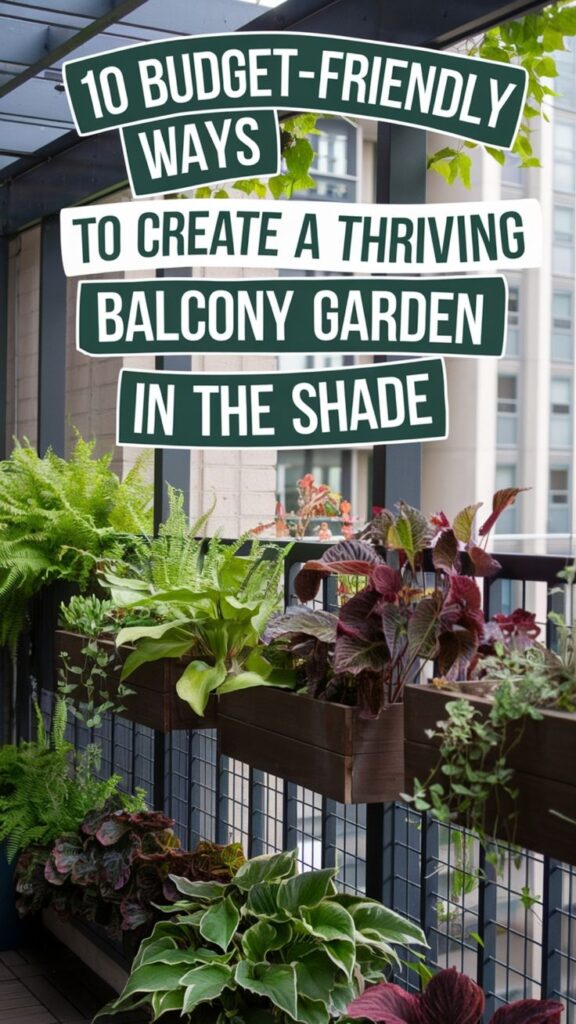
Contents
- 1 Choose Shade-Tolerant Plants for Your Balcony
- 2 Repurpose Household Items as Planters
- 3 Create Vertical Gardens With Minimal Cost
- 4 Use Reflective Surfaces to Boost Light
- 5 Opt for Low-Cost Soil and Compost Mixes
- 6 Propagate Plants From Cuttings for Free
- 7 Incorporate Low-Maintenance Ferns and Moss
- 8 Design a Layered Layout for Depth
- 9 Source Affordable Decor From Thrift Stores
- 10 Utilize DIY Trellises for Climbing Greenery
Choose Shade-Tolerant Plants for Your Balcony
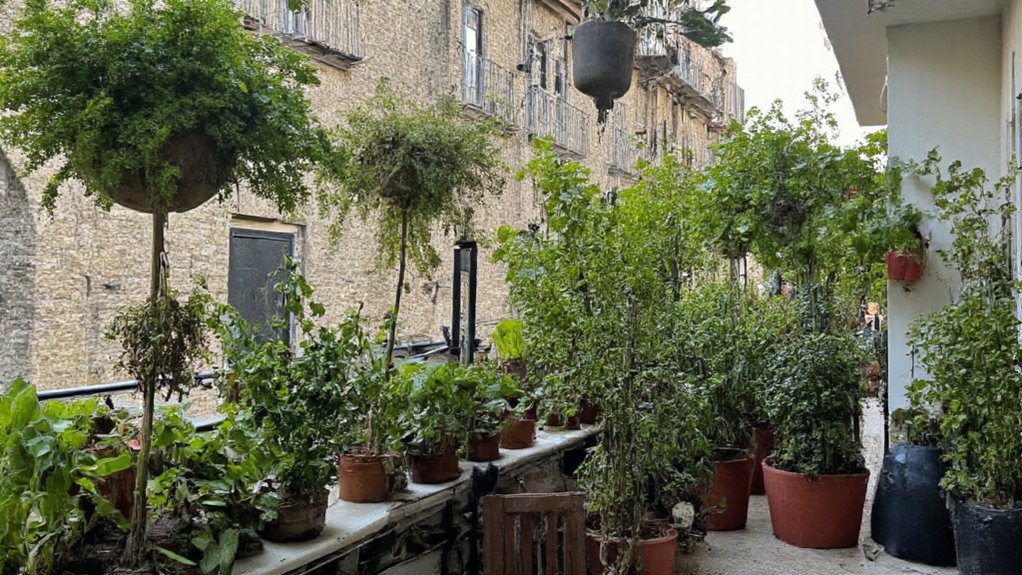
When creating a low-light balcony garden, selecting shade-tolerant plants is essential for success. Balconies with limited sunlight, often due to tall buildings or overhanging structures, require plants that can thrive in partial or full shade. Opt for species like ferns, hostas, and impatiens, which are known for their ability to grow well without direct sunlight. These plants not only adapt to lower light conditions but also add lush greenery and texture to your space.
Additionally, consider foliage plants like pothos or peace lilies, which are low-maintenance and can handle indirect light. Herbs such as mint and parsley can also do well in shadier spots, providing both aesthetic value and practical use. By choosing the right shade-tolerant plants, you can create a vibrant balcony garden even on a budget, ensuring your space remains green and inviting despite limited sunlight.
Repurpose Household Items as Planters

Repurposing household items as planters is a creative and cost-effective way to enhance your low light balcony garden. Everyday objects like old tin cans, mason jars, cracked mugs, or even worn-out colanders can be transformed into unique planters with a little imagination. Simply clean the items, add drainage holes if necessary, and fill them with soil to create a quirky home for your shade-loving plants like ferns or pothos.
This approach not only saves money but also adds a personal touch to your balcony space. You can paint or decorate these items to match your style, turning potential waste into charming garden decor. By reusing what you already have, you contribute to a sustainable lifestyle while building a cozy, green retreat in a low light environment.
Create Vertical Gardens With Minimal Cost
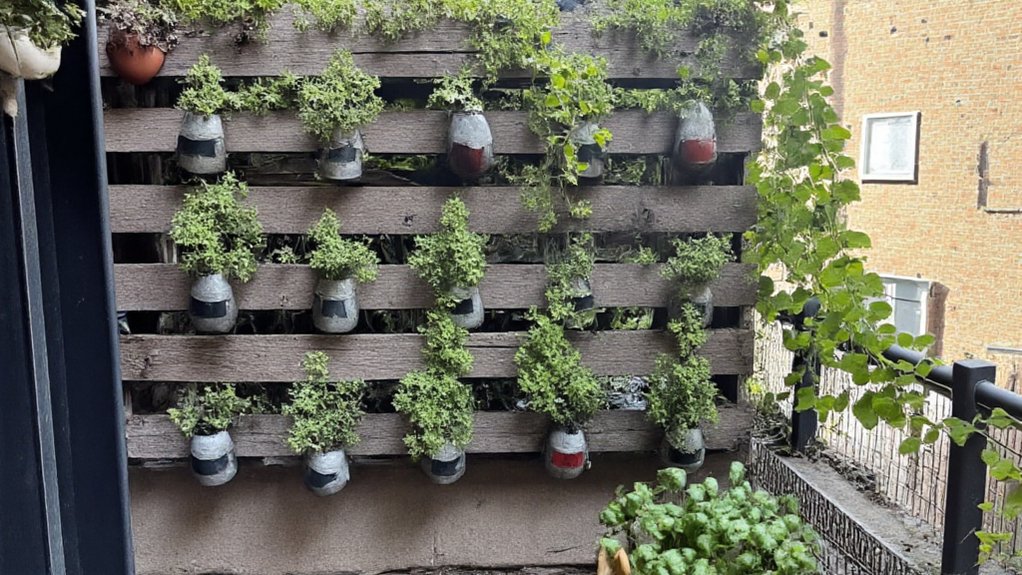
Creating vertical gardens is an excellent way to maximize space in a low-light balcony garden while keeping costs low. By utilizing walls, railings, or freestanding structures, you can grow a variety of shade-tolerant plants like ferns, ivy, or pothos without needing expensive materials. Use repurposed items such as old wooden pallets, hanging shoe organizers, or even stacked crates to create tiers for planting, securing them with basic hardware or zip ties for stability.
To keep expenses minimal, source free or low-cost containers like tin cans, plastic bottles, or thrift store finds, and attach them to your vertical structure with wire or string. Fill these with affordable potting soil and plant seeds or cuttings that thrive in low light, ensuring proper drainage by adding small holes if needed. This approach not only saves money but also adds a lush, green aesthetic to your balcony, making the most of limited space and light conditions.
Use Reflective Surfaces to Boost Light

Using reflective surfaces is a clever and budget-friendly way to enhance light in a low-light balcony garden. By strategically placing mirrors, metallic planters, or even white-painted surfaces, you can bounce available light around the space, making it appear brighter and more inviting. Mirrors, for instance, can be mounted on walls or fences to reflect sunlight or ambient light into shaded areas, effectively doubling the illumination without additional costs.
Additionally, incorporating light-colored materials like white pebbles, pale paving stones, or glossy tiles can further amplify the effect. These surfaces not only reflect light but also create a sense of openness, making your balcony garden feel larger and more vibrant. This simple trick is especially useful in urban settings where natural light is often limited by surrounding buildings or structures.
Opt for Low-Cost Soil and Compost Mixes

When creating a low light balcony garden on a budget, opting for low-cost soil and compost mixes is a smart way to save money without compromising plant health. Instead of purchasing expensive pre-mixed potting soil, consider buying basic garden soil in bulk and mixing it with affordable compost or organic matter like kitchen scraps (e.g., vegetable peels or coffee grounds) to enrich it. Many local garden centers or hardware stores offer budget-friendly options, and some communities even provide free or discounted compost through recycling programs.
You can also create your own compost at home using a small bin or container, which is ideal for balcony spaces. This not only reduces costs but also promotes sustainability by recycling organic waste. Just make sure the mix is well-draining and suitable for the specific needs of your low light plants, such as adding sand or perlite for better aeration if needed.
Propagate Plants From Cuttings for Free
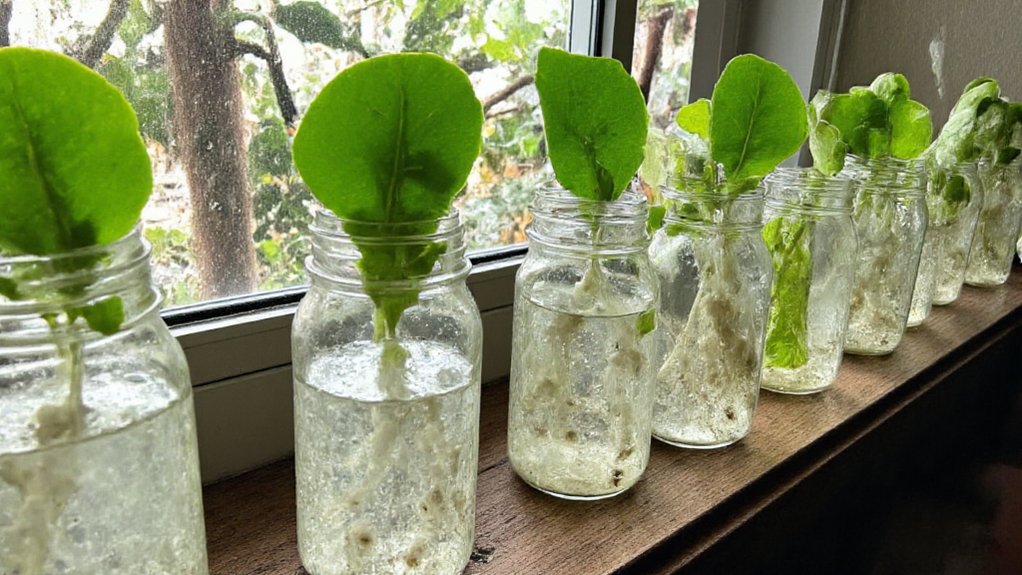
Propagating plants from cuttings is a fantastic way to expand your low light balcony garden without spending a dime. Many common houseplants, such as pothos, spider plants, and philodendrons, can be easily grown from cuttings. Simply snip a healthy stem with a few leaves, remove the lower leaves near the cut, and place the cutting in water or moist soil until roots develop. This method allows you to multiply your existing plants or share with friends, keeping your garden thriving at no extra cost.
To guarantee success, use a clean, sharp tool to make the cut and change the water regularly if rooting in water to prevent rot. For low light conditions, choose plants that naturally thrive in shade and be patient, as rooting may take a few weeks. This budget-friendly technique not only saves money but also adds a personal touch to your balcony garden as you nurture new growth from your own plants.
Incorporate Low-Maintenance Ferns and Moss
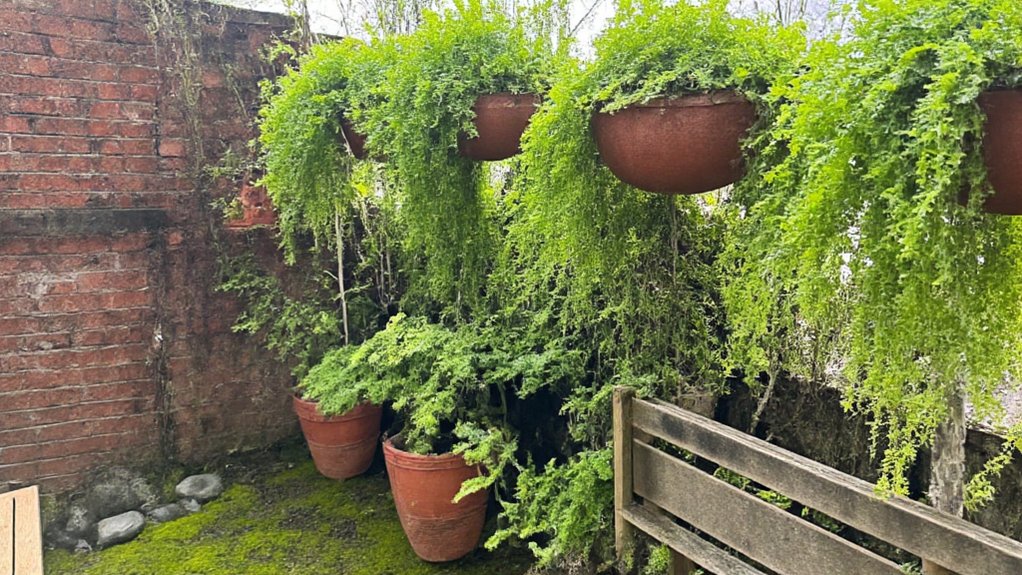
Incorporating low-maintenance ferns and moss into a low light balcony garden is a fantastic idea for creating a lush, green space without requiring much upkeep. Ferns, such as Boston ferns or maidenhair ferns, thrive in shady, humid conditions, making them perfect for balconies with limited sunlight. They add a soft, feathery texture to the garden and can be placed in hanging baskets or pots to maximize space.
Moss, on the other hand, is an excellent ground cover or accent for shaded areas, requiring minimal care and no mowing. It can be used to cover soil in pots, create a natural carpet between plants, or even grow on rocks or driftwood for a whimsical touch. Both ferns and moss are budget-friendly options, often available at local nurseries or even propagated from existing plants, making them ideal for transforming a balcony into a serene, low-maintenance oasis.
Design a Layered Layout for Depth

Designing a layered layout for depth is an effective way to maximize space and create visual interest in a low-light balcony garden, especially on a budget. By arranging plants at different heights using shelves, hanging pots, or stacked containers, you can mimic the natural depth of a larger garden. This approach not only makes the most of limited square footage but also guarantees that plants with varying light needs can be positioned strategically—taller, shade-tolerant plants at the back and smaller, low-light-loving ones in front.
To achieve this, repurpose affordable items like old ladders, crates, or cinder blocks to create tiers. Hang lightweight pots or use wall-mounted planters to add vertical elements without cluttering the floor space. This layered design adds dimension, making your balcony garden feel lush and full, even in dim conditions, while keeping costs low by utilizing recycled or second-hand materials.
Source Affordable Decor From Thrift Stores

Thrift stores are a treasure trove for affordable decor that can transform your low light balcony garden without breaking the bank. From vintage pots and quirky planters to decorative lanterns and small sculptures, these stores often carry unique, budget-friendly items that add personality to your space. Many pieces can be repurposed or upcycled with a little creativity, such as turning an old metal tray into a plant stand or using mismatched ceramic bowls as planters.
Shopping at thrift stores not only saves money but also promotes sustainability by giving pre-loved items a new purpose. Take time to browse regularly, as inventory changes frequently, and you might stumble upon hidden gems that perfectly suit your balcony’s aesthetic. With a bit of patience and imagination, thrift store finds can elevate your garden’s charm while keeping costs low.
Utilize DIY Trellises for Climbing Greenery
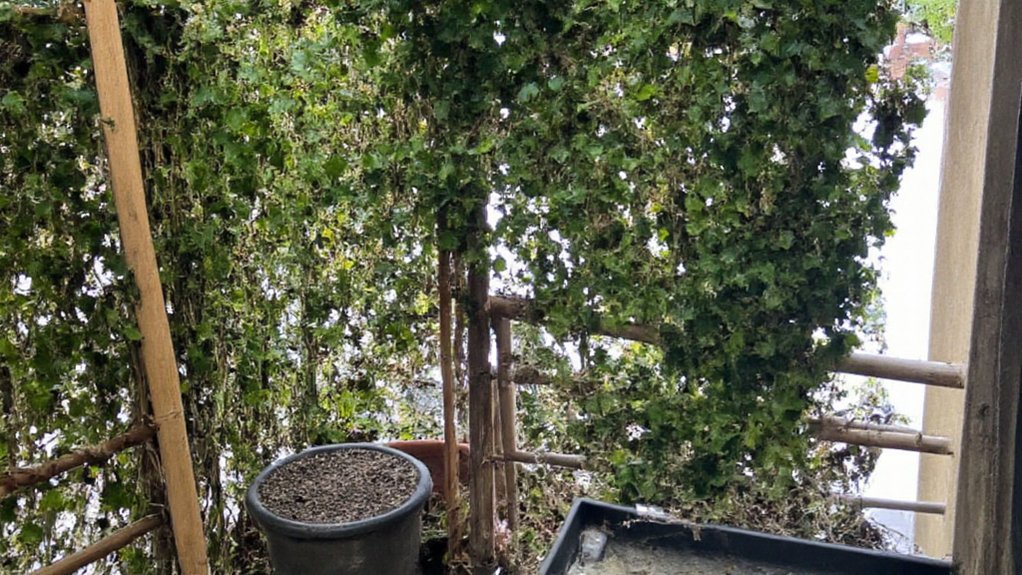
Utilizing DIY trellises for climbing greenery is an excellent way to maximize space and add vertical interest to a low-light balcony garden on a budget. Trellises provide support for climbing plants like ivy, pothos, or jasmine, which can thrive in shaded conditions and bring lush, green vibes to your space. By creating your own trellis using affordable materials such as wooden stakes, wire mesh, or even repurposed items like old ladders or pallets, you can customize the design to fit your balcony’s layout and aesthetic.
To make a simple DIY trellis, gather materials like twine, bamboo poles, or scrap wood, and assemble them into a grid or lattice pattern. Secure the structure to a wall, railing, or sturdy pots to guarantee stability. Not only does this approach save money, but it also allows you to experiment with different shapes and sizes, transforming bare walls or corners into vibrant, green focal points without breaking the bank.
